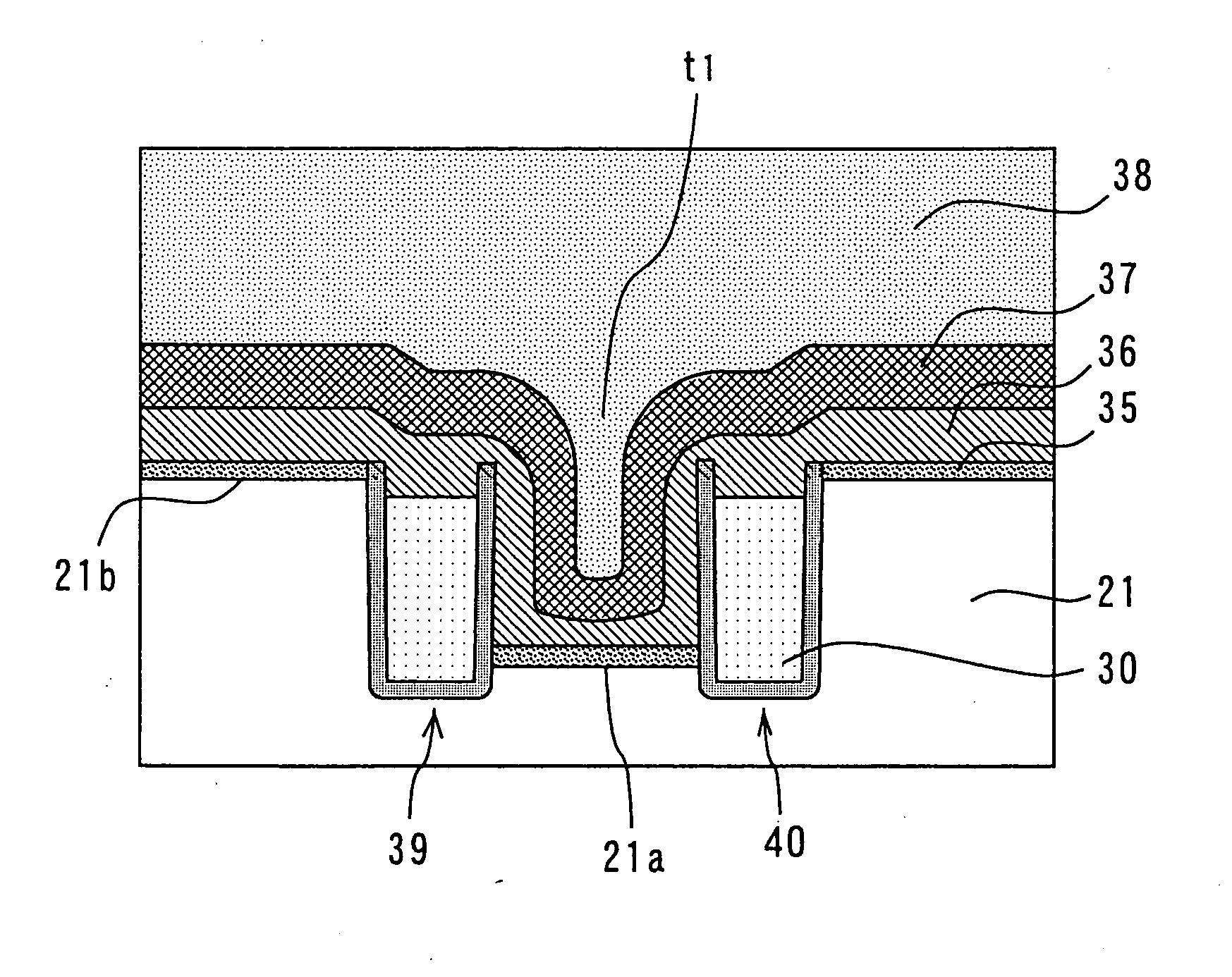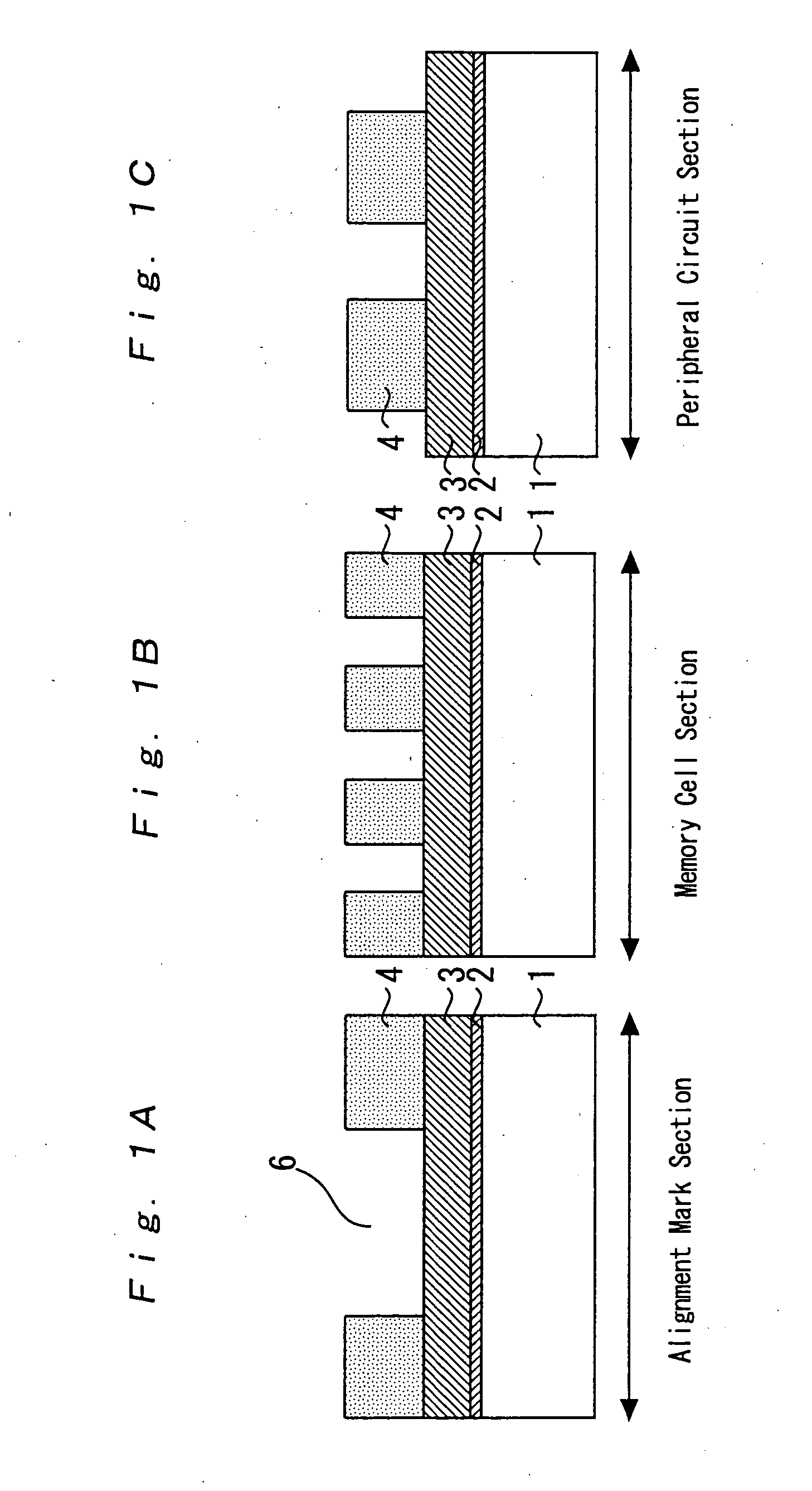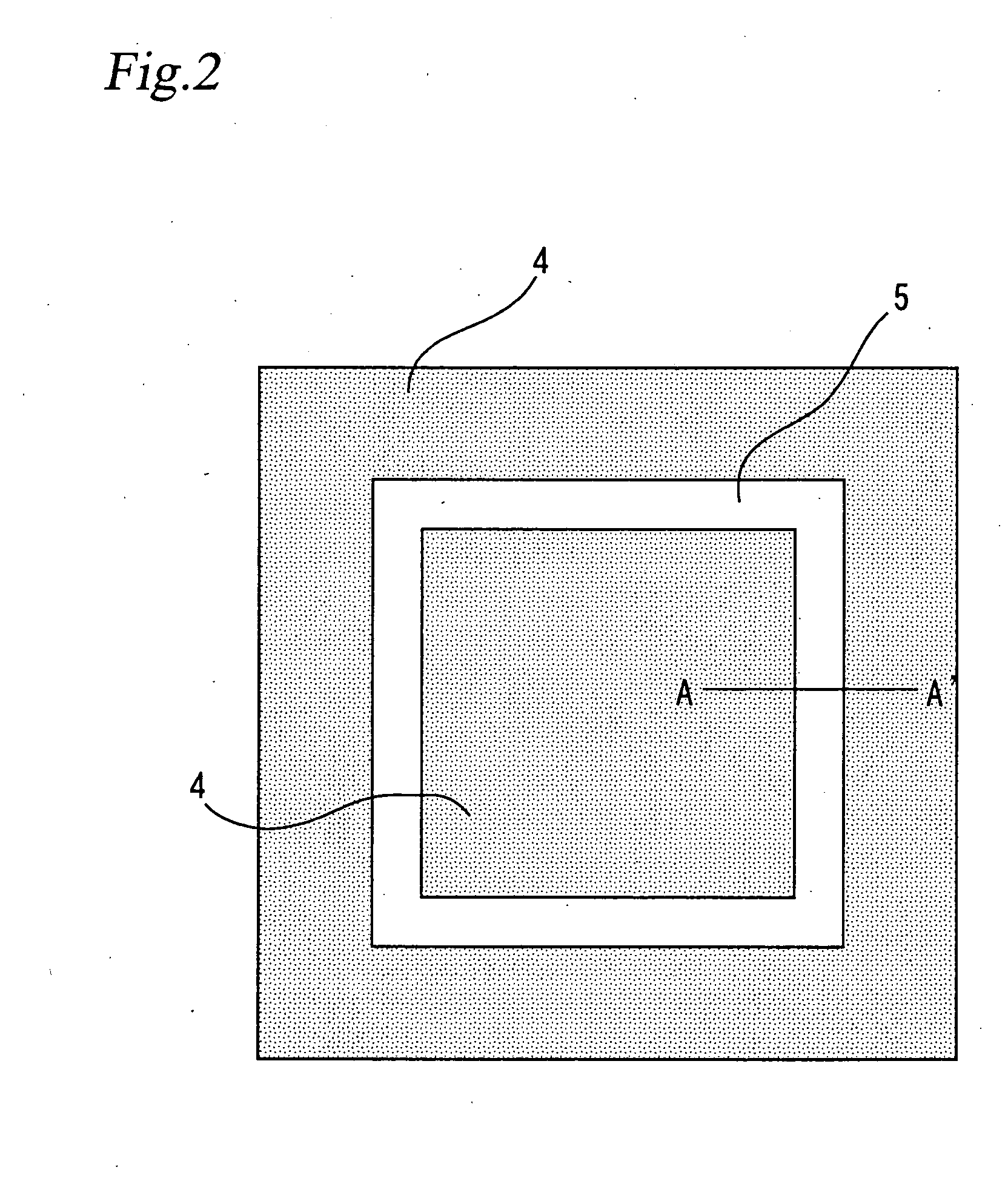Method for manufacturing semiconductor device
a manufacturing method and semiconductor technology, applied in semiconductor devices, semiconductor/solid-state device details, electrical devices, etc., can solve the problems of large increase in the number of processes required, difficulty in detecting alignment marks, and reducing throughput, cost, yield, etc., to reduce the number of manufacturing processes required and reduce the effect of alignment accuracy
- Summary
- Abstract
- Description
- Claims
- Application Information
AI Technical Summary
Benefits of technology
Problems solved by technology
Method used
Image
Examples
first embodiment
[0127] Description will be made of a method for manufacturing a semiconductor device according to a first embodiment of the present invention with reference to FIGS. 1 to 11. It should be noted that in these figures, like numerals will be used to denote like components.
[0128] As shown in FIGS. 1A to 1C, first a silicon oxide film 2 is formed on a semiconductor substrate 1 of a first conductive type as a first insulation film. Then, a silicon nitride film 3 is formed on the silicon oxide film 2. The silicon nitride film 3 is used to form a hard mask.
[0129] A silicon substrate may be used as the semiconductor substrate 1. Further, the silicon oxide film 2 may be formed by the thermal oxidation method such that it has a film thickness of approximately 20 nm. Still further, the silicon nitride film 3 may be formed by the CVD (Chemical Vapor Deposition) method such that it has a film thickness of approximately 100 nm.
[0130] Then, active region patterns are formed on the semiconductor ...
second embodiment
[0153] Description will be made of a method for manufacturing a semiconductor device according to a second embodiment of the present invention with reference to FIGS. 12 to 21. It should be noted that in these figures, like numerals will be used to denote like components.
[0154] First of all, as in the first embodiment, a silicon oxide film 22 is formed on a semiconductor substrate 21 of a first conductive type as a first insulation film. Then, a silicon nitride film 23 is formed on the silicon oxide film 22. The silicon nitride film 23 is used to form a hard mask. A silicon substrate may be used as the semiconductor substrate 21.
[0155] Then, active region patterns are formed on the semiconductor substrate 21 by use of a photolithographic technique. Specifically, first a resist pattern 24 is formed on the silicon nitride film 23, producing the structures shown in FIGS. 12A to 12C. It should be noted that FIGS. 12A, 12B, and 12C show the portions of the resist pattern (24) in the al...
third embodiment
[0173] The alignment mark section of a third embodiment of the present invention employs the same patterns as those shown in FIG. 2 described in connection with the first embodiment.
[0174] Description will be made of a method for manufacturing a semiconductor device according to the present embodiment with reference to FIGS. 22 to 27. It should be noted that in these figures, like numerals will be used to denote like components.
[0175] First of all, a first insulation film and a hard mask are sequentially formed on a semiconductor substrate of a first conductive type. Then, the first insulation film and the semiconductor substrate are etched using the hard mask, forming grooves having a predetermined depth in the alignment mark section and the device formation section of the semiconductor substrate. After burying a second insulation film into the grooves, the hard mask is removed. For example, as shown in FIGS. 22A to 22C, active region patterns are formed on a semiconductor substr...
PUM
 Login to View More
Login to View More Abstract
Description
Claims
Application Information
 Login to View More
Login to View More - R&D
- Intellectual Property
- Life Sciences
- Materials
- Tech Scout
- Unparalleled Data Quality
- Higher Quality Content
- 60% Fewer Hallucinations
Browse by: Latest US Patents, China's latest patents, Technical Efficacy Thesaurus, Application Domain, Technology Topic, Popular Technical Reports.
© 2025 PatSnap. All rights reserved.Legal|Privacy policy|Modern Slavery Act Transparency Statement|Sitemap|About US| Contact US: help@patsnap.com



